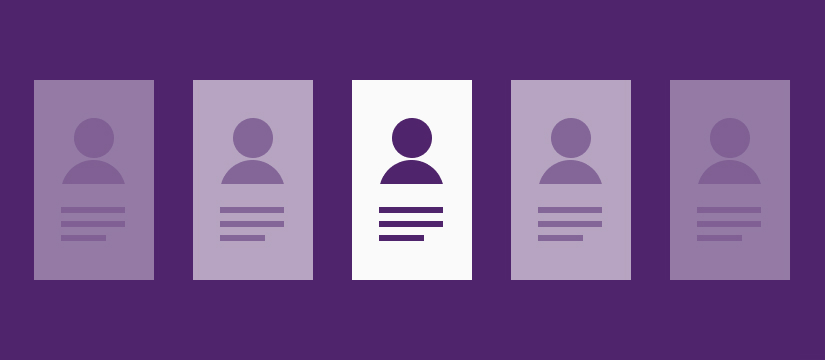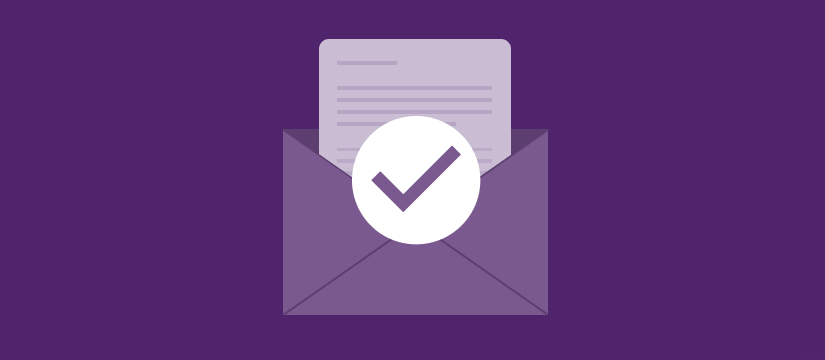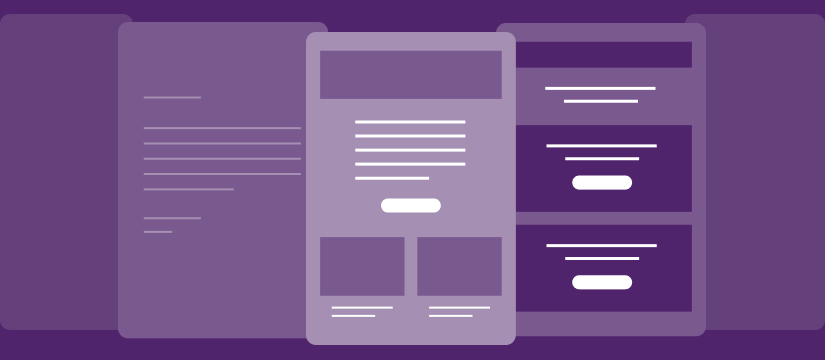Email marketing is the most efficient and effective way of consistently getting in front of and sharing your expertise with target audiences. Companies that sell advertising platforms and services may try to tell you otherwise, but their motive is clear. This is not to say ads can’t also play an important role in making leads aware of your company and services, but email marketing undeniably provides a higher return on investment than any other digital marketing channel.
This is because an inbox is, for the most part, a personally curated space. That means it’s your responsibility as the email marketer to maintain the recipient’s trust or run the risk of being banned from their space. If you’re a firm that sells your knowledge and expertise (as opposed to goods) you likely have a longer buy cycle. So, building and maintaining trust isn’t just important for getting and staying in your prospect’s inbox; it’s also necessary for your business development efforts. In conclusion, email marketing is important because it’s a direct and effective channel for reaching prospects.
Now that we’ve established why having an email marketing strategy is important, let’s talk about how to get started.
- How to Build an Email Marketing List
- The Fundamentals of Email Deliverability
- Email Marketing Frequency Best Practices
- Email Marketing Formats
- Marketing Email Performance Benchmarks
- How Email Marketing Helps Your Business
How to Build an Email Marketing List
A successful email marketing strategy relies heavily on the quality (and size) of your email marketing list. Most companies get stuck here, because building a marketing list is often more difficult than actually implementing an email marketing strategy. When possible, it’s best to grow your email signup list organically. Here are the four main tactics for doing so:
- Create insightful, educational content that generates traffic based on your target prospects’ pain points.
- Make sure to include at least one call to action on every page.
- Produce premium content to provide relevant and appealing conversion opportunities.
- Keep your forms simple for a smooth user experience.
For more detail on each of these tactics, read our full article on How to Get More Email Sign Ups.
As most firms have experienced, it takes years to grow your list organically, even when you’re doing everything right. For this reason, we promote running ads to conversion-focused assets on your site. We generally recommend using LinkedIn as the most effective channel for generating targeted B2B leads.
In addition to (or in place of) running ads, some firms opt to purchase a marketing list to expand their reach more quickly. This is sometimes necessary for reaching the optimal volume of contacts in a reasonable timeframe. Emailing individuals who have not signed up to receive your marketing communications is known as non-permission-based email marketing. And although it is often not advised, it can work. We’ve written extensively about How to Market to a Purchased List.
If you hope to establish and maintain an effective email marketing strategy, it’s important to build on your basis with opt-ins. This is important, because contacts who have signed up to receive your communications will engage at a higher rate. Engagement is necessary for optimal deliverability and inbox placement.
The Fundamentals of Email Deliverability
If you’re going to spend the time to build an email marketing list, you should do everything you can to ensure the email gets delivered.
The first step is to authenticate yourself as a sender. Authentication signals to the Internet Service Providers (ISP) that the sender is who they say they are. With the help of your IT team and email service provider (ESP), you validate yourself as a trusted sender using these three methods of authentication:
- DomainKeys Identified Mail, or DKIM, is a technology designed to make it difficult for spammers to pose as legitimate organizations. This technology requires senders to “sign” a message as proof it really came from them.
- Similar to DKIM, SenderID targets spoofing, phishing, and other cyber threats by verifying the sender’s domain name and IP address against the alleged owner of the sending domain.
- Unlike DKIM and SenderID, which protect the header sender address, Sender Policy Framework (SPF) protects the envelope sender address, which is used for the delivery of messages.
After achieving validation, the next step in ensuring good deliverability is to keep your marketing list clean. The ESP or marketing automation tool you use should automatically suppress bounces and opt-outs, but it’s also a best practice to run a re-engagement program or periodically remove inactive records. An inactive record is a contact who has not opened or clicked on an email over a long period of time. Deeming a contact inactive depends on the frequency with which emails are sent. For example, if you send an email every week, you might consider a contact inactive who fails to engage for 3-6 months. If you send less frequently, you may have to wait up to a year before determining a lead is inactive.
Lastly, it’s important to acknowledge the role email engagement plays in deliverability. Many email service providers state if a user is not opening or clicking messages from a sender, over time the messages from that sender will be automatically sent to the spam folder. Likewise, if messages from a specific sender are always opened and clicked, future messages from that sender will continue to show up in the inbox. For marketers, that means creating email messages that are targeted and relevant to your marketing list. Be sure to give recipients a reason to open and click, otherwise your email will likely not make it to your contact’s inbox.
While there is no magic process that will guarantee 100% delivery each time, if you follow all the tips outlined here, you should be well on your way to high deliverability rates. For more on this topic, see our article on Email Marketing Deliverability Best Practices.
Email Marketing Frequency Best Practices
Every marketer has to find the right cadence of contact to generate engagement without encouraging unsubscribes. This frequency can vary drastically from company to company. For example, a retailer selling consumer goods will likely email their list more often than a B2B firm selling a service, simply because their buyer profiles and purchase cycles are different.
Email campaign goals also differ across verticals. While every company wants to send emails of value to prospective customers, a retailer with a number of products and sales to promote might run an email campaign to increase sales of a particular product—and be more likely to see quick return on investment.
On the other hand, a B2B marketer is often reliant on the firm’s thought leadership output and must base the frequency of emails on the content that exists to support it.
If your company isn’t regularly producing content, you’ll have a hard time consistently emailing your list. This is problematic for deliverability because consistency encourages engagement. Our research shows a weekly cadence is often most effective for B2B firms. Emailing weekly—compared to once, twice, or three times per month—results in the most engagement. And surprisingly, weekly emails also prompted the lowest unsubscribes rates.
Emailing weekly gives you the ability to establish a send day and time. This helps establish recipients’ expectations, an important factor for optimal engagement. If your marketing list comes to expect your educational or thought-provoking emails every Friday, for example, they are more likely to open the email either when they first see it or when they have time to come back to it. Because they’ve come to expect the email, they are also less likely to unsubscribe or mark the email as spam. It’s important to note, however, that you have to first gain the recipient’s trust by sending quality content that provides value. Read our Email Marketing Frequency Best Practices article for more on that topic.
Segment Your Marketing List by Engagement Level
A true outbound strategy is more involved than emailing your marketing list weekly. In addition to consistently emailing your list, you should segment and market to your list based on engagement. Ideally, you should have a different strategy for your most- and least-engaged leads.
For example, sending engaged leads more targeted email communications to push them down the funnel. If you’re interested in what types of emails and programs to set up, check these articles:
- 3 Easy Automated Programs to Nurture Top of Funnel Leads
- How to Set Up a Middle of the Sales Funnel Automated Program
Meanwhile, recipients who haven’t opened or clicked an email in more than a year shouldn’t receive weekly emails. Email cadence for inactive leads should be significantly slower. Ideally, rather than sending your regularly scheduled emails to these individuals, they should be guided toward a re-engagement program that will either nudge them toward increased engagement or cue removal from your list.
Email Marketing Formats
When it comes to email marketing formats, there are four elements that Newfangled recommends mixing and matching:
- Branded emails are nicely designed emails that frequently live in a template that you design. These types of emails are more visual and typically contain your logo, social links, and, sometimes, related image(s).
- Non-branded emails are also marketing emails, but they don’t necessarily look that way. In fact, they could look as if an individual at your firm wrote the email directly from their mailbox and delivered it to an individual on your marketing list. It’s not immediately apparent that these emails were sent to large groups of people.
- Multi-link emails promote multiple pieces of content in the same email. Often, they arrive in the form of “newsletters” or “blog digests” that are delivered on a regular basis.
- Single-link emails, on the other hand, only promote one piece of content at a time, so all clicks-through are concentrated in a single location.
In our experience, we’ve found it best to test different combinations of these various formats. However, it’s best to stick with particular formats for these different types of marketing emails:
- Content promotion email highlighting an article, video, or premium content (i.e. white paper, ebook, etc.).
- Webinar emails that include the invitation, confirmation, reminder, and follow-up.
- Blog digests promoting recently published content. (These are sent weekly, monthly, quarterly, or annually depending on content production.)
- Newsletter promoting new content, events, and accomplishments. Newsletters are often sent monthly, quarterly, or in some cases annually. Like blog digests, the impetus is based on intervals of time; however, they promote more than just recently published content.
- Theme emails are also like a blog digest in that they feature multiple pieces of content, but instead of time-based, they highlight multiple articles or pieces of content written about X, Y, or Z topic.
- Lead nurturing emails typically belong to a series containing useful and targeted content aimed at pushing the lead down the funnel.
- Event invitation emails can be used to promote an event you’re hosting and are often linked to event registration landing pages and forms.
- Transactional/confirmation emails are triggered one-to-one by a specific action, such as a visitor signing up to receive your thought leadership.
Try and keep your format consistent for each type of email. For example, blog digests, newsletters, and theme emails are often formatted as branded multi-link emails. It’s best to maintain consistency and avoid adjusting the template or format dramatically each time you send one of these emails. This will help the recipient become familiar enough to engage with your content, but it does not mean you should never update your template. In fact, you probably should give the template a refresh every year or so.
Although a branded, multi-link format is the obvious choice for the emails highlighted here, the format you should use for content promotion, lead nurturing, webinar, and event invitation emails is often less obvious. Unfortunately, there’s not a one-size-fits-all answer. Like so many things, it depends on what your firm is comfortable with and what you feel best represents your brand.
You can also choose a format based on the content you’re promoting. For example, you may choose a branded, single-link format to highlight new articles, while alternately promoting white papers via unbranded, single-link format (or visa versa). You should also consider the content being highlighted and tone of the email when choosing a format for your correspondence.
Marketing Email Performance Benchmarks
Email campaign results vary based on the type of email, who you are emailing, and the content in the email. In most cases, the person you’re emailing and whether that person expects your email are the most dependable predictors of engagement. The open rate benchmark for transactional emails is around 50 percent. Alternately, marketing emails hover around 20 to 30 percent, and a cold email may not reach even 10 percent. Aim for a benchmark that’s based on your past performance, list make-up, email marketing frequency, and the content you have to support it.
Testing for Optimal Performance
A/B testing is the most effective way to increase open and click-through rates. You’re already putting in the time and effort to create an email campaign for your prospects, clients, or subscribers, so why not take a little extra time to learn something while you’re at it?
All you need to do is create two copies of your email—changing variables like the title, body copy, imagery, button colors, or placement of your call to action—and send each version to an equal percentage of your list. By noting which version resulted in the most engagement (and, hopefully, conversions), you’ll learn how to make smarter marketing decisions that work most effectively for your specific target audience. And, if you send the test to a representative sample of the list before sending the winning version to the majority, you ensure that your testing efforts have an immediate payoff.
We’ve provided a list of variables to test and a set of tools to organize, plan, and track A/B email tests in our article, The Importance of A/B Testing your Marketing Emails.
With every email, you would begin to amass a lot of knowledge about your own best practices with your email subscribers, the specific factors that typically result in the most clicks, and the types of subject lines that result in the most opens.
How Email Marketing Helps Your Business
A lot of work goes into a successful email marketing strategy. A well planned and executed strategy will give your expert firm a real boost. Which is why email marketing is still one of the most popular forms of digital marketing in the B2B sector. When selling your expertise as a service, you will have to work to make a favorable impression. You have to educate prospective buyers throughout the marketing process before they hire you.
A successful email marketing strategy contains multiple emails that are spread intelligently over a long period of time. But these emails are often as effective as they are helpful to the recipient. It’s important to focus on creating and sending content that educates the recipient rather than pushing a sales message. Your prospect will be in a better buying position if you educate them prior to the sales conversation. And you’ll be in a better position if you can establish yourself as the informed expert on the problems they are facing. Your email marketing strategy will help position you as the expert and keep you top of mind when your prospect is ready to buy.






